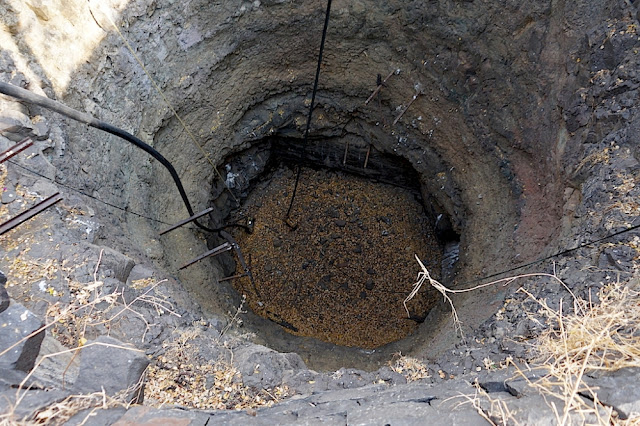Drought
migrants flee to India’s cities
IRIN,
27
June, 2014
After
fleeing drought in Andhra Pradesh State, Manikamma’s tiny shack in
India’s capital is now periodically swamped with fetid water when
heavy rains flood the shantytown she now calls home.
She
had no choice but to sell off her land and remaining cattle at
cut-rate prices, and bring her two children to this overcrowded
cluster of huts constructed from tarpaulins and other scavenged
materials in New Delhi.
"Water
in the Penna River has completely dried up,” Manikamma said. “We
got drinking water in our homes only once a week. Had I not left ...
my kids would have died of starvation.”
Parts
of the country have been in the throes of drought for two years,
which has caused a wave of migration as crops fail. After months of
high temperatures and dry weather, the monsoon rains have finally
arrived, although they have yet to reach some drought-stricken areas
in central India. And the past two monsoon seasons have been too weak
to stave off the drought.
Many
people have been forced to leave their parched fields for India’s
cities in search of work. Like Manikamma, who makes $4 a day carrying
bricks, they often find employment on construction sites.
No
one helping
Authorities
at the state and federal level have been criticised for their poor
response to the drought, which has affected about a quarter of the
country’s 1.3 billion people, according to a submission to the
Supreme Court by the central government in April. The testimony was
in response to a case filed by an NGO to push the government to
create a standard policy for declaring drought and providing
compensation.
Also
in April, a group of more than 150 leading economists, activists, and
academics wrote an open letter to Prime Minister Narendra Modi,
calling the government’s response “listless, lacking in both
urgency and compassion”.
In
the absence of adequate assistance, rural people have been forced to
“migrate en masse”, according to a recent paper published by a
group of NGOs.
Evidence
of mass migration is obvious in villages that are emptying out, and
in the city train stations where villagers arrive with all the
belongings they can carry.
The
government has released no figures on the numbers of drought
migrants, but Caritas mentioned numbers from one village in
Maharashtra State, Barnapur, telling IRIN that 70 of 1,000
inhabitants had left in search of work.
"So
far, climate migration hasn't been high on India’s policy agenda
due to more pressing challenges like poverty, population growth, and
urbanisation," Shashank Shekhar, an assistant professor from the
Department of Geology at the University of Delhi, told IRIN. "But
given the current protracted agrarian crisis, a cohesive
reconstruction and rehabilitation policy for migrants becomes
imperative."
Down
the road
The
government does have plans to help farmers – in the long term.
When
he presented the national budget in February, Finance Minister Arun
Jaitely said the government planned to double farmers’ incomes
within five years.
The
budget allocates $16 billion for rural development, including $2.5
billion for delayed irrigation projects. The government has also
approved a $1.3 billion insurance programme, which will allow farmers
to insure their crops against natural damage at premiums as low as
1.5 percent of the value of the crops.
"But
these measures will take time to show results," a senior
official from the Ministry of Water Resources who was not authorised
to speak publicly told IRIN.
In
the meantime, farmers like Ram Lal, from the central mountain region
of Bundelkhand, have no option but to migrate in search of work.
“We're
farmers and have never done construction work before,” said Lal,
who has been living under a flyover in central Delhi for the past
month. “But do we have a choice?”




No comments:
Post a Comment
Note: only a member of this blog may post a comment.